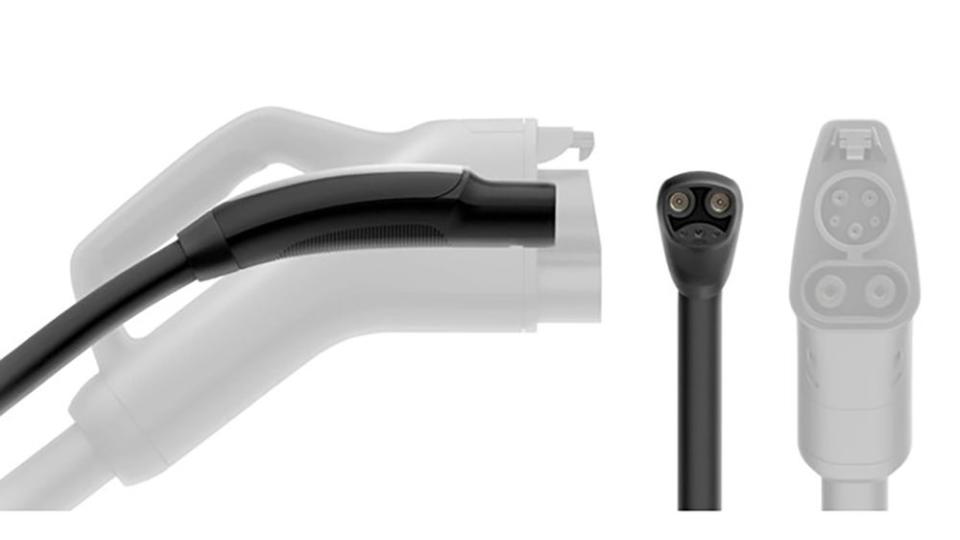Tesla’s Charging System Is Going Wide and Finally Getting Certified

SAE’s certification means engineering and development parameters have been established so developers can proceed with “many critical aspects of deployment and commercialization of the NACS connector.”
An SAE official said CCS chargers used by other automakers have “a bulky and hard-to-handle cable” and a problematic, damage-prone mechanical latch. (Pictured above is Tesla’s NACS charging connector next to the CCS alternative.)
Tesla wouldn’t have been eligible for certain federal funding unless its stations were open to vehicles using the widespread Combined Charging System (CCS) protocol.
On December 19, the global engineering organization SAE International (formerly the Society of Automotive Engineers) announced it had reached a milestone in setting standards for the use of Tesla charging, including the vaunted Supercharger Network, by the growing number of outside automakers that want to use it.
Tesla uses its own North American Charging Standard (NACS), which the company opened to other automakers in November last year. The Volkswagen Group is the latest to sign on, but beginning with Ford and General Motors it’s had a lot of company.
The standard is called J3400, and the milestone was the release of its Technical Information Report (TIR). SAE says the completion of the report “means certain critical engineering and development parameters have been established to allow developers to proceed with certainty about many critical aspects of deployment and commercialization of the NACS connector.” This is the first professional certification of NACS, complementing only some technical documents that Tesla has released.
Many non-Tesla automakers are currently using the Combined Charging System (CCS) protocol that was introduced by SAE’s J1772 standard in 1996. There’s also the so-called CHAdeMO standard, developed by Japanese automakers in 2010 and still popular there, but now on the wane in much of the world. The Nissan Leaf is a prominent user.
CHAdeMO was certified by another standards agency, the Institute of Electrical and Electronics Engineers (IEEE), after SAE decided not to take it on.
The certification process is “definitely not over,” Rodney McGee, who runs the Transportation Electrification Center at the University of Delaware and is chairman of the SAE J3400 NACS Task Force, told Autoweek.
“But a lot of the basics have been locked down—connection types, the way you plug in, the meat-and-potatoes items,” McGee said. “We felt it was important to get [the TIR] out this year because carmakers other than Tesla will be using NACS by 2025.”
McGee said CCS chargers have “a bulky and hard-to-handle cable” and a problematic mechanical latch that provided “opportunities for damage,” but he said CCS’ design is only one of the issues that has led to a high rate of non-operative CCS stations. He said the new standard contains upgrades that will make it cheaper to build charging infrastructure.

 Yahoo Autos
Yahoo Autos 